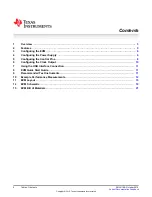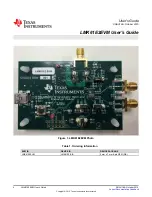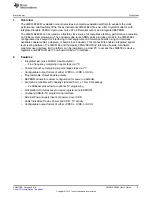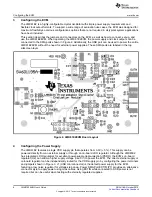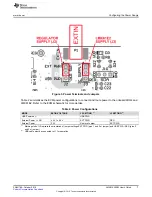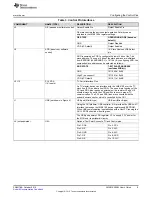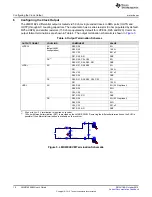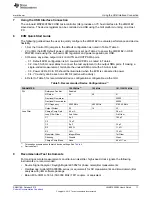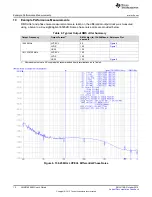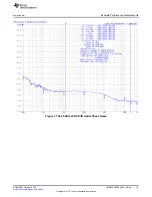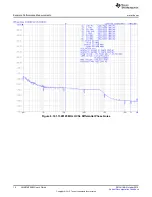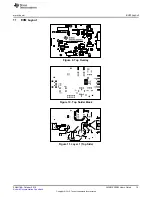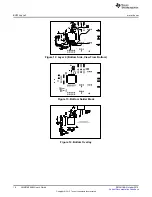
Overview
1
Overview
The LMK61E2EVM evaluation module provides a complete evaluation platform to evaluate the clock
performance and flexibility of the Texas Instruments LMK61E2 Ultra-Low Jitter Crystal Oscillator, with
integrated tunable 50 MHz crystal, low noise PLL, differential output, and integrated EEPROM.
The LMK61E2EVM can be used as a flexible clock source for compliance testing, performance evaluation,
and initial system prototyping. The onboard edge-launch SMA ports provides access to the LMK61E2’s
configurable clock output for interfacing to test equipment and reference boards using commercially
available coaxial cables, adapters, or baluns (not included). This connectivity enables integrated system
level testing between TI’s LMK61E2 and third-party FPGA/ASIC/SoC reference boards. A software
graphical user interface (GUI) platform can be installed on a Host PC to access the LMK61E2’s device
registers and EEPROM via the on-board USB-to-I
2
C interface.
2
Features
•
Integrated low noise 50 MHz tunable crystal
–
Fine frequency margining in ppm steps via I
2
C
•
Coarse frequency margining in percentage steps via I
2
C
•
Configurable output format of either LVPECL, LVDS, or HCSL
•
Programmable Output Enable polarity
•
EEPROM allows for custom configuration for power up defaults
•
Footprint compatible with industry standard 5 mm x 7 mm XO package
–
2 additional pins allow for optional I
2
C programing
•
GUI platform for full access to device registers and EEPROM
•
On-board USB-to-I
2
C programming interface
•
External Power supply inputs or powered over USB
•
LEDs indicators: Device Power and USB / I
2
C activity
•
Configurable output format of either LVPECL, LVDS, or HCSL
5
SNAU188 – October 2015
LMK61E2EVM User's Guide
Copyright © 2015, Texas Instruments Incorporated


